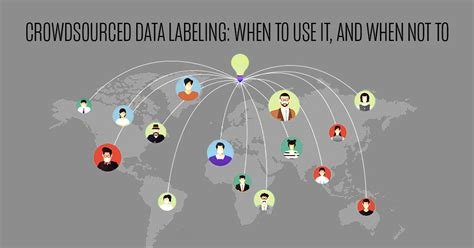The blog post titled The Internet of Things and Its Role in Scientific Innovation explores the transformative impact of the Internet on scientific research and experimentation. It begins by discussing how the Internet of Things (IoT) has ushered in a new era of connectivity, enabling seamless data collection and real-time monitoring in various research fields. The article further delves into how the Internet enhances scientific experimentation by facilitating collaboration among researchers and allowing for more efficient data analysis. Finally, it outlines key takeaways from the IoT, emphasizing its potential to drive future innovations in science and technology. By leveraging the capabilities of the Internet, researchers can pioneer breakthroughs that were previously unimaginable, ultimately advancing our understanding of the world.
Exploring The Internet of Things: A New Era of Connectivity
The Internet of Things (IoT) is reshaping the way we interact with our environment, enabling devices to communicate with one another, and paving the way for scientific breakthroughs. This transformative technology connects everyday objects to the internet, resulting in a network of devices that collect and exchange data. The IoT’s significance becomes particularly evident in the realm of scientific innovation, where researchers leverage this connectivity to enhance their experimentation and analysis capabilities. By integrating the Internet into scientific methodologies, we can streamline processes and improve the accuracy of results.
One major advantage of the IoT in scientific research is the ability to gather real-time data. Scientists can monitor experiments remotely, reducing the need for manual data collection and increasing efficiency. With the IoT, devices can remain connected and share information continuously—providing a wealth of insights that were previously unattainable. The data collected can also be analyzed using advanced algorithms, leading to enhanced decision-making processes and identifying new areas for exploration.
Benefits of IoT
- Enhanced data collection capabilities
- Real-time monitoring and feedback
- Improved accuracy and efficiency in experiments
- Cost-effective resource management
- Collaboration across disciplines and locations
- Accelerated innovation and discovery
- Increased accessibility of scientific knowledge
As the Internet of Things continues to evolve, it has become increasingly clear that its applications in the scientific community are vast. By connecting instruments and devices across various settings, researchers can collaborate seamlessly, sharing ideas and findings in a connected ecosystem. This collaborative approach fosters creativity and fuels the momentum for innovative solutions to complex problems. The influence of IoT reaches far beyond traditional laboratory settings, transforming numerous fields, including healthcare, environmental monitoring, and agricultural practices.
As we look towards the future, the role of the Internet of Things in scientific innovation is poised to grow even further. The integration of IoT technology will facilitate advancements in automation and artificial intelligence, empowering researchers to push the boundaries of what is possible. With ongoing investment in IoT infrastructure and applications, the future of scientific discovery looks promising—rooted firmly in the foundation of a connected world.
How The Internet Enhances Scientific Experimentation
The integration of The Internet into scientific research has dramatically transformed experimentation processes across various disciplines. By fostering connectivity among researchers, it not only streamlines data collection but also enhances real-time analysis and collaboration. This connectivity offers a multitude of advantages, such as increased accessibility to vast datasets, improved communication among scientific communities, and the ability to conduct remote experiments. As a result, the scientific community can operate more efficiently than ever before.
Moreover, the application of IoT (Internet of Things) devices can be a game-changer in gathering crucial data from diverse environments. Using these connected devices, researchers can monitor complex systems and environments continuously, providing insights that were previously unattainable. This level of granular data collection enables scientists to identify trends, draw more accurate conclusions, and ultimately advance knowledge in their specific fields. Such capabilities can lead to more innovative solutions and breakthroughs.
Steps to Implement IoT in Research
- Identify research objectives and potential IoT applications.
- Select appropriate IoT devices and sensors based on the research needs.
- Develop a connection strategy for networking these devices.
- Ensure data security measures are in place during implementation.
- Integrate data collection systems for seamless information flow.
- Analyze and visualize collected data to derive meaningful insights.
- Collaborate with stakeholders to share findings and enhance impact.
As we delve deeper into the utilization of IoT in scientific experimentation, it is essential to recognize areas like case studies of successful applications. The practical implementation of IoT has shown significant outcomes, offering a framework for future projects. Collaborative efforts among institutions utilizing The Internet have led to shared resources and expertise, demonstrating that multi-disciplinary approaches can yield remarkable innovations.
Case Studies of Successful IoT Applications
Several case studies illustrate the profound impact of IoT on scientific endeavors. For instance, one notable project involved environmental monitoring where researchers deployed a network of sensors to track air quality and pollution levels in real-time. This application not only highlighted the importance of timely data but also fostered community engagement through transparent reporting. These successful initiatives serve as benchmarks for others aiming to leverage The Internet for experimental purposes.
Challenges in Integrating IoT with Existing Systems
Despite the advantages, integrating IoT into existing systems entails various challenges. Researchers often encounter compatibility issues, where newer IoT technologies may not seamlessly align with traditional research methodologies or legacy systems. Additionally, data privacy and security become significant concerns as the proliferation of connected devices can expose sensitive information to potential breaches. Addressing these challenges is crucial for maximizing the benefits that The Internet brings to scientific experimentation.
Key Takeaways from The Internet of Things for Future Innovations
The advancements in The Internet of Things (IoT) have propelled scientific innovation into new territories. As various sectors, including healthcare, agriculture, and manufacturing, integrate IoT technologies, the potential for data-driven decision-making grows exponentially. This connectivity fosters a collaborative environment where devices communicate seamlessly, leading to enhanced efficiency and productivity. In future innovations, harnessing data collected from IoT devices can streamline various processes, reducing waste and increasing responsiveness.
Moreover, the synergy between IoT and scientific research has catalyzed breakthroughs in real-time data analytics. By leveraging these capabilities, researchers can monitor experimental conditions more effectively and make rapid adjustments based on incoming data. This shift not only improves the accuracy of experiments but also accelerates the timeline for discoveries. As such, the implications of the IoT extend beyond mere connectivity, reshaping methodologies and fostering new forms of innovation.
- Invest in IoT infrastructure to enable more efficient data collection and analysis.
- Encourage interdisciplinary collaboration between scientists, engineers, and data analysts.
- Develop comprehensive training programs focused on IoT technology usage and applications.
- Implement strict data security measures to protect sensitive information.
- Promote open-source platforms for greater accessibility to IoT innovations.
- Stay updated on emerging IoT trends to remain competitive in your field.
- Foster partnerships with technology providers to facilitate smoother integration of IoT solutions.
To fully realize the potential of The Internet, organizations must adopt a proactive approach to integrating IoT technologies. This includes understanding the vast amount of data generated and finding ways to analyze and interpret it effectively. By utilizing advanced analytics and machine learning algorithms, scientists can uncover patterns that were previously hidden, opening the door to innovative solutions that can address global challenges, such as climate change and public health crises.
In conclusion, the future innovations spawned by the IoT hold immense promise for transforming industries. As we continue to navigate through this technological revolution, it is essential to not only embrace IoT technologies but also to recognize their far-reaching applications in scientific fields. By capitalizing on the data-driven insights provided by The Internet, we can usher in a new era of advancements that enhance our understanding of complex systems and improve our ability to respond to various challenges.
Frequently Asked Questions
What is the Internet of Things (IoT)?
The Internet of Things (IoT) refers to the interconnected network of physical devices embedded with sensors, software, and other technologies that enable them to collect and exchange data over the Internet.
How does the Internet of Things benefit scientific research?
The IoT enhances scientific research by enabling real-time data collection, remote monitoring of experiments, and improved collaboration among researchers, leading to quicker insights and innovative solutions.
What types of scientific experiments can utilize the IoT?
Various scientific fields, including environmental monitoring, healthcare, and robotics, utilize the IoT for experiments that require real-time data analysis and automation to improve efficiency and accuracy.
How does connectivity through the Internet influence scientific collaboration?
Connectivity through the Internet fosters global collaboration among researchers, allowing them to share data, resources, and findings more efficiently, which accelerates the pace of scientific discovery.
What security concerns arise with the Internet of Things in scientific applications?
Security concerns include potential data breaches, unauthorized access to sensitive research, and vulnerabilities in connected devices, necessitating robust cybersecurity measures to protect valuable scientific information.
Can the Internet of Things help in environmental sciences?
Yes, the IoT plays a critical role in environmental sciences by enabling continuous monitoring of natural resources, tracking changes in ecosystems, and providing precise data for analysis to inform conservation efforts.
What innovations can we expect from the integration of IoT in science?
Integrating IoT in science can lead to innovations such as predictive analytics in healthcare, advanced robotics for exploratory missions, and enhanced agricultural practices through smart farming technologies.
How can future scientists leverage the Internet for research?
Future scientists can leverage the Internet by utilizing cloud computing for data storage and analysis, accessing vast online databases for literature reviews, and employing collaborative platforms to connect with peers worldwide.









